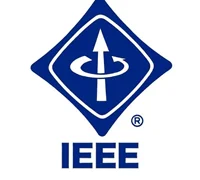دانلود ترجمه مقاله برنامه ریزی بسط تولید در بازار برق با در نظر گرفتن عدم قطعیت در تقاضای بار
| عنوان فارسی |
برنامه ریزی بسط تولید در بازار برق با در نظر گرفتن عدم قطعیت در تقاضای بار و حضور GENCOهای استراتژیک |
| عنوان انگلیسی |
Generation expansion planning in electricity market considering uncertainty in load demand and presence of strategic GENCOs |
| کلمات کلیدی : |
برنامه ریزی بسط تولید؛ برنامه ریزی ریاضیاتی تعادل؛ مساله محدودیت؛ GENCO استراتژیک؛ عدم قطعیت؛ مدل سه سطحی |
| درسهای مرتبط | بازار برق |
| تعداد صفحات مقاله انگلیسی : 13 | نشریه : ELSEVIER |
| سال انتشار : 2017 | تعداد رفرنس مقاله : 53 |
| فرمت مقاله انگلیسی : PDF | نوع مقاله : ISI |
|
پاورپوینت :
ندارد سفارش پاورپوینت این مقاله |
وضعیت ترجمه مقاله : انجام نشده است. |
1. مقدمه 2. الگوریتم پیشنهادی 3. محدودیت های غیرقابل انعطاف و عدم قطعیت در مساله دینامیک 4. فرمول بندی ریاضیاتی 5. تبدیل مساله سه سطحی به یک سطحی 6. مطالعه موردی: شبکه MREC 7. نتیجه گیری

این مقاله چارچوبی برای مطالعه گسترش ظرفیت تولید در یک افق چندمرحله ای در حضور شرکت های تولید استراتژیک (GENCO ها) را ارائه می دهد. مدل سه سطحی پیشنهادی، یک بازار برق مقید به شبکه مبتنی بر مخزن است که تحت عدم قطعیت در تقاضای بار پیش بینی شده و مدل سازی شده بوسیله مدل مارکوف گسسته، ارائه می شود. اولین سطح شامل تصمیم های مرتبط با سرمایه گذاری با هدف بیشینه سازی سود کل، همه GENCO ها در افق برنامه ریزی است، درحالی که سطح دوم در برگیرنده تصمیمات مرتبط با سرمایه گذاری با هدف بیشینه سازی سود کل هر GENCO می باشد. سطح سوم شامل بیشینه سازی رفاه اجتماعی در جایی که بازار بر تسویه می شود، می باشد. مسئله بهینه سازی سه سطحی به یک مسئله یک سطحی از طریق برنامه ریزی خطی عدد صحیح مختلط (MILP) جانبی با استفاده از تبدیل اولیه-دوگانه و شرایط «کاروش-کوهن-تاکر» (KKT)، تبدیل می شود. بازده چارچوب پیشنهادی برروی شبکه انتقال شرکت برق منطقه ای مازندران (MREC)- قسمتی از سیستم قدرت به هم متصل ایران- مورد بررسی قرار می گیرد. نتایج شبیه سازی تایید می کنند که چارچوب پیشنهادی می تواند ابزار مفیدی برای تحلیل رفتار سرمایه گذاری در بازارهای برق در حضور GENCO های استراتژیک باشد. مقدمه: امنیت و کیفیت تامین، که بیانگر میزان دسترسی فیزیکی به برق در مقادیر کافی در همه زمان ها و قیمت های مناسب برای مصرف کنندگان می باشد، به عنوان اولویت برتر از زمان آزاد سازی بازار برق تبدیل شده است [1-5]. این دو ویژگی حیاتی تامین برق الکتریکی باید به صورت کوتاه مدت و بلندمدت تضمین شود[6]. برای دستیابی به این هدف، داشتن یک همبستگی مثبت بین گسترش تولید ورشد تقاضا برای حفظ تعادل بین عرضه و تقاضا، مهم است. اما، برنامه ریزی توسعه تولید به یک مسئله پیچیده در صنعت تولید برق در فضای رقابتی تبدیل شده است [7-9]. در یک فضای رقابتی، لازم است که بهره بردار مستقل سیستم به قابلیت های مدل ها و ابزارهای محاسباتی مجهز باشد تا آنرا قادر سازد رفتار توسعه بخش تولید در سیستم های قدرت تحت عدم قطعیت را مورد مطالعه قرار دهد[5، 7، 10-27].
This paper presents a new framework to study the generation capacity expansion in a multi-stage horizon in the presence of strategic generation companies (GENCOs). The proposed three-level model is a pool-based network-constrained electricity market that is presented under uncertainty in the predicted load demand modeled by the discrete Markov model. The first level includes decisions related to investment aimed to maximize the total profit of all GENCOs in the planning horizon, while the second level entails decisions related to investment aimed at maximizing the total profit of each GENCO. The third level consists of maximizing social welfare where the power market is cleared. The three-level optimization problem is converted to a one-level problem through an auxiliary mixed integer linear programming (MILP) using primal–dual transformation and Karush–Kuhn–Tucker (KKT) conditions. The efficiency of the proposed framework is examined on MAZANDARAN regional electric company (MREC) transmission network – a part of the Iranian interconnected power system. Simulation results confirm that the proposed framework could be a useful tool for analyzing the behaviour of investment in electricity markets in the presence of strategic GENCOs. Introduction: Security and quality of supply, which implies the physical avail-ability of electric power in sufficient quantities at all times and prices that are affordable for consumers, have remained top priorities since the electricity market liberalization [1–5]. These two vital features of the electric power supply must be ensured on the short and long-term basis [6]. To achieve this goal, it is important to have a positive correlation between generation expansion and the demand growth to maintain balance between production and consumption. However, generation expansion planning has become a complex issue in the power generation industry in the competitive space [7–9]. In a limited competitive space, it is necessary that the independent system operator is equipped with the capabilities of models and computational tools to enable it to study the behavior of the expansion of the generation sector in power systems under uncertainty [5,7,10–27].




دیدگاهها
هیچ دیدگاهی برای این محصول نوشته نشده است.